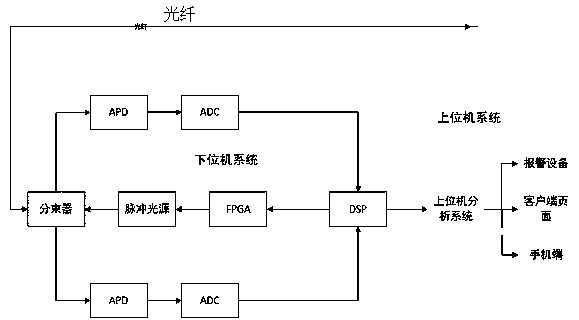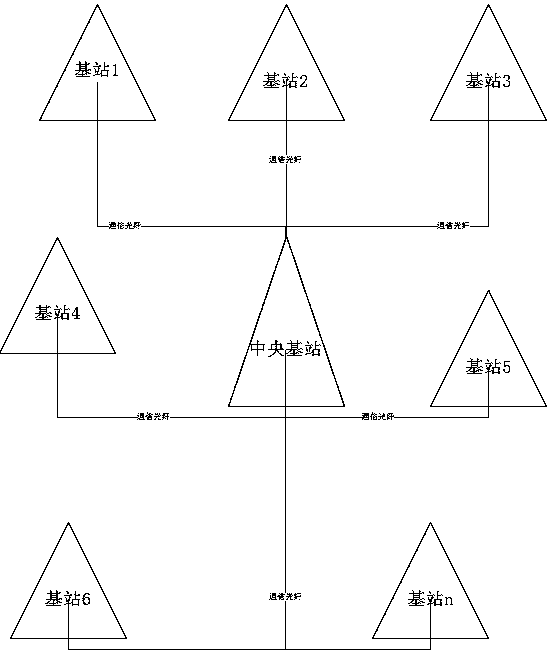Optical fiber seismic monitoring system based on back rayleigh scattering principle
A technology of Rayleigh scattering and seismic monitoring, which is applied in seismic measurement, seismology, geophysical measurement, etc., and can solve problems that are not suitable for comprehensive deployment
- Summary
- Abstract
- Description
- Claims
- Application Information
AI Technical Summary
Problems solved by technology
Method used
Image
Examples
Embodiment Construction
[0017] The process of Rayleigh backscattering can be described as the vector sum of backscattering of a series of random reflection units. The amplitude of the backscattering of the reflection unit obeys the Rayleigh distribution, and the phase obeys the uniform distribution. The Monte Carlo method can be used to simulate the backscattering process of reflective elements randomly distributed along the fiber path. The wavelength of the monochromatic laser is 1550nm, and the pulse width is 500ns. Under the same environmental conditions, the relationship between the simulated Rayleigh backscattering and the fiber distance is as follows Figure 5 As shown, the curve S1 represents the Rayleigh backscattering signal without vibration, the curve S2 represents the Rayleigh backscattering signal with increased vibration at 7km, and the curve S3 represents the disturbance signal (the positions of the three curves in the figure pass through the overall up and down pan to differentiate ...
PUM
 Login to View More
Login to View More Abstract
Description
Claims
Application Information
 Login to View More
Login to View More - R&D
- Intellectual Property
- Life Sciences
- Materials
- Tech Scout
- Unparalleled Data Quality
- Higher Quality Content
- 60% Fewer Hallucinations
Browse by: Latest US Patents, China's latest patents, Technical Efficacy Thesaurus, Application Domain, Technology Topic, Popular Technical Reports.
© 2025 PatSnap. All rights reserved.Legal|Privacy policy|Modern Slavery Act Transparency Statement|Sitemap|About US| Contact US: help@patsnap.com



